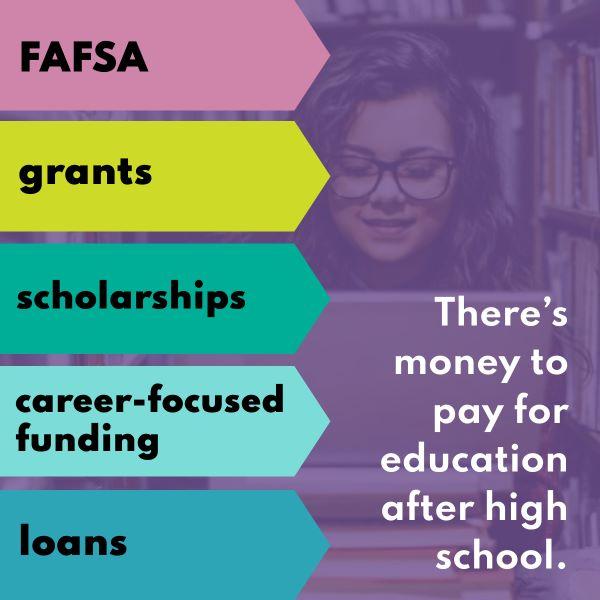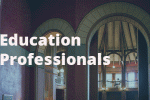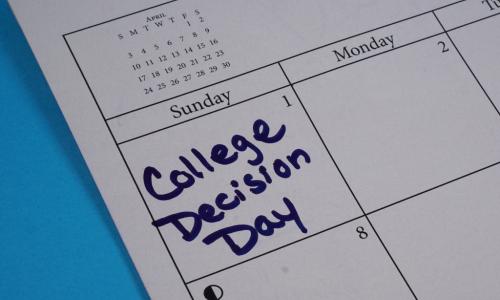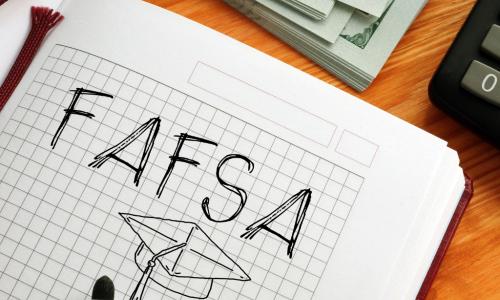VSAC transferred the servicing of your Federal Student loans to American Education Services and the guarantee of all VSAC Federal Student loans to the Trellis Company, an approved Federal Guaranty Agency, over the weekend of March 16th. CLICK HERE for more information.
5 Ways VSAC helps you find funding for your education or training

October is the beginning of financial aid season. For anyone thinking of going to college or getting training, it’s the time to start the process to apply for education funding for the coming academic year.
For high school students (and their parents), or adults contemplating training to learn skills for a new career, applying for financial aid can seem daunting. But don’t panic! VSAC offers a wide range of online resources, counseling, step-by-step assistance, and plenty of encouragement to help you plan for college or training and get all the funding you’re eligible for to help you pay for your education needs.
Here's how to get started.
(Prepare to) fill out the FAFSA
All types of financial aid — from federal student aid and loan programs to Vermont grants and all VSAC-assisted scholarships — require the Free Application for Federal Student Aid (FAFSA). Students need to file a FAFSA form every year they wish to be considered for financial aid.
For this reason, VSAC counselors have always advised students to start with the FAFSA, and to get it completed as soon as they can after that year’s form is made available, usually around October 1.
However, this year, officials aren’t expected to release the new FAFSA form for the 2024/25 academic year until sometime in December. So, VSAC counselors are currently focusing students and families on the other parts of aid and scholarship applications that can be completed in the meantime.
“We’ve always said ‘do the FAFSA first’ because it’s the biggest and most time-consuming application to complete,” says Miranda Roth, Manager of Grant and Scholarship Operations for VSAC. “While the FAFSA is still required for almost all loan and scholarship programs, the order you do the paperwork in doesn’t matter. So this year, we’re suggesting that families complete the other pieces first.”
Here are five “to dos” you can take care of now.
1. Create an FSA ID
A Federal Student Aid (FSA) ID is a required part of filling out the FAFSA. If the student is a dependent student, the student and at least one parent (and in some cases, both parents) will need an FSA ID. If the student is self-supporting, the student (and their spouse, if applicable) will need their own individual FSA ID. This year, in an effort to enhance identity security, there will likely be a 3-5 business day turnaround before the FSA ID is verified.
So VSAC counselors suggest that families do that part of the process now (it’s a short online process that takes about 10 minutes), and then keep those FSA IDs handy for when they fill out the FAFSA.
To create an FSA ID, each person who will provide information on the FAFSA will need their own email address. VSAC counselors are prepared to help Vermonters create their FSA ID (including free email addresses if necessary). We can provide that assistance in-person at our Resource Center in Winooski, with a local Outreach Counselor at your area high school, or you can contact us to set up a virtual meeting.
2. Apply for a Vermont grant
There are three kinds of grants you can use for your education or training:
STATE GRANT: If you're a Vermont resident, you may be eligible to receive grant money from the state. VSAC is your resource for Vermont grants. Grant amounts vary by student and by year, depending on available funding and financial need. This free “gift aid” is awarded based on financial need, so you don’t need to pay it back. But you DO need to apply. The 2024/2025 Vermont Grant Application is now available. Because applications are considered on a first-come, first-served basis, the earlier you apply, the better.
When you apply for your Vermont grant, you’ll also need to submit the FAFSA. Once the FAFSA becomes available in December, as long as you list your state of legal residence as Vermont, VSAC will receive your FAFSA information and match it up with your Vermont Grant application.
FEDERAL GRANTS: Pell grants, FSEOG grants, TEACH grants, and Iraq & Afghanistan service grants from the U.S. Department of Education.
COLLEGE GRANTS: Available from your education institution. Contact your college’s financial aid office to ask what applications need to be filed. Be sure to look for financial aid deadlines and additional forms that may be required.
Find out more about Vermont grants, as well as federal and college grants, at vsac.org/grants.
3. Consider workforce development opportunities
VSAC, in partnership with other Vermont agencies, offers grants and interest-free forgivable loans to help eligible students afford the degree or training they need to pursue the career they want.
- FORGIVABLE LOAN PROGRAMS are available in several of Vermont’s most in-demand career fields, including skilled trades such select building, mechanical, industrial or medical trades, emergency services, energy, transportation, and other high-demand sectors. Other careers for which you may be able to get a forgivable loan include mental health care and teaching. New for this year: forgivable loans for nursing faculty, public-school teaching, and soon to come, dental hygiene and psychiatric nurse practitioners.
All of the forgivable loan programs require students to commit to working in their field in Vermont for at least one year for each year that their loans are forgiven. Students must apply every year to indicate that they still meet the requirements.
Some items of note:
- While the nursing forgivable loan program is maxed out for the 2023/24 academic year, a new round of funding will be made available for 2024/25.
- The Vermont Trades forgivable loan requires applicants to have an annual income less than $100,000.
- All forgivable loan programs are based on legislative funding approval.
Details on all of the forgivable loan programs are available through workforce development.
- The 802OPPORTUNITY GRANT PROGRAM will also continue into the 2024/25 academic year. Under this program, any student with a family adjusted gross income of $75,000 or less annually can attend the Community College of Vermont tuition-free for two years between their federal Pell Grant, Vermont Grant and 802Opportunity.
To be considered for funding under this program, all the student needs to do is fill out the FAFSA and the Vermont Grant application. “If they meet the eligibility requirements, then 802Opportunity funding is included when they receive notification of their Vermont Grant award. It makes it really simple for students, not having to submit a separate application,” says Roth.
4. Look for available scholarships
Scholarships are offered by many different groups, organizations, and even individuals. They're offered for all kinds of attributes — and to all kinds of students. VSAC can help guide you through the scholarship search process.
Every year, VSAC compiles a scholarship booklet of opportunities available to Vermont residents. Here in our state’s “small pond,” many of those scholarships receive only 100 or so applicants — which means you may have a higher chance of winning a Vermont-specific scholarship than you might if you’re competing nationwide.
This year’s booklet, which can be downloaded or ordered on VSAC’s website, includes information on more than 150 scholarships administered by VSAC, plus scholarships run by outside organizations. Some scholarships offer one-time awards, while others are renewable, meaning the student can receive additional financial awards for each subsequent year of study. The annual award amounts generally range from $500 to $6,250.
The application deadline is Feb. 14, 2024, for all VSAC-assisted scholarships. Most of these opportunities require a completed FAFSA and Unified Scholarship Application (USA), plus a general essay and often recommendation letters.
Download VSAC's 2024–2025 scholarship booklet, order a printed copy through the mail, or check with your school’s counseling office to get a copy. If you have scholarship questions, start with your school’s VSAC outreach counselor, visit vsac.org, email scholarships@vsac.org or call (888) 253-4819.
DOWNLOAD vsac'S SCHOLARSHIP BOOKLET
5. Education loans – do your research
Many students need loans to pay for education expenses after grants, scholarships, work-study, and savings. If you’re new to the world of education loans, the details can often be confusing.
There are two main options for student loans: federal (government) loans or private loans from banks, credit unions, and other lenders. You should research all your options for federal loans, also known as Direct loans, before shopping around for private loans.
As Vermont’s nonprofit state agency, VSAC can help you understand the basics of federal and “private” loans (they're not created equal). We'll also show you ways to compare options so that you can minimize your monthly payments and the amount you’ll pay in the long term. Find out more at vsac.org/student-loans.
More ways VSAC can help
Don’t forget, in December you can complete the 2024-2025 Free Application for Federal Student Aid (FAFSA). VSAC will be available for FAFSA Completion Support, with in-person and virtual opportunities available. Visit vsac.org/events for more information. You can also call the FAFSA hotline Monday-Friday 8:00-4:30 for quick questions (833-802-8722).
If you graduated with your bachelor’s degree from a college located in Vermont in the spring of 2023 and plan to work in Vermont for the next two years, you may want to apply for loan repayment under the Green Mountain Job Retention Program. Funding is still available, and spring ’23 graduates have until November 2023 to apply. (This program will be extended to 2024 graduates as well, with a new round of funding that was approved by the Vermont Legislature.)
Additional questions? Email us info@vsac.org and we’ll get you in touch with someone who can help.





